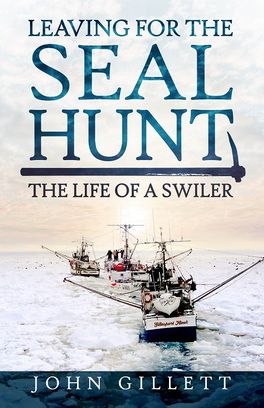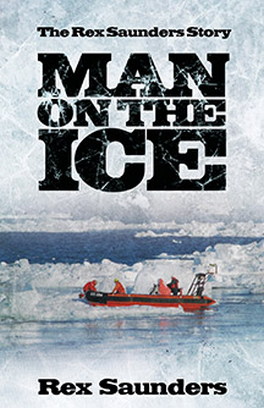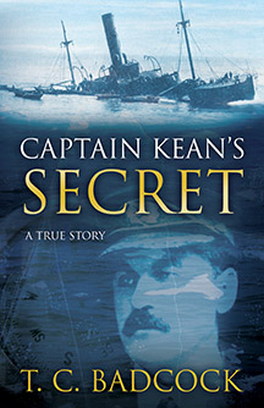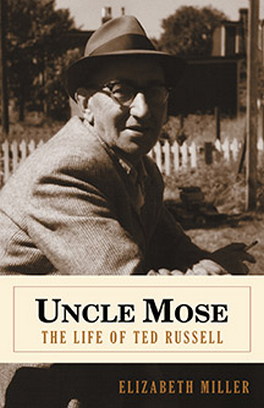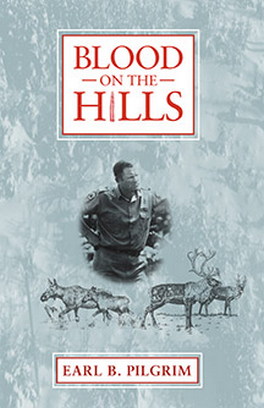“In the harsh, bitter, cold environment we work in, seal harvesting and fishing are two of the most dangerous jobs in the world. The North Atlantic has no friends. It just makes you believe it is your friend when it offers up its beauty and bounty. Without notice it can turn ugly, a ravenous enemy ready to devour! It doesn’t matter if you are the greatest or the worst fishing captain in the North Atlantic: if the sea wants you, it will get you.” This is the memoir of John Gillett, a fisherman and staunch advocate of the Newfoundland seal hunt. He grew up in Twillingate in the 1950s, idolizing the fishermen and sealing skippers who would visit his home to yarn with his father, the famous sealing captain George Gillett. John spent most of his adult life as a sealer, beginning in the early winter of 1971, when he wrote his uncle and asked for a berth out on the ice with him aboard the Arctic Endeavour. As a participant in the most controversial animal hunt in the world, John also describes his run-ins with the Department of Fisheries and Oceans Canada and animal rights activists, such as People for the Ethical Treatment of Animals (PETA) and the International Fund for Animal Welfare (IFAW). In Leaving for the Seal Hunt, he shares stories of working with fellow sealers, of friendships that lasted a lifetime, of his many adventures on the ice . . . and of defying death at every turn.
I remember growing up in Twillingate, Newfoundland, in the 1950s when fishermen and old sealing skippers would visit our home to yarn with my father, Captain George Gillett. My role models growing up in outport Newfoundland were no different than most of the other people’s heroes who lived by the sea. These were the best fishermen, bird hunters, sealers, boat builders, and loggers. This was what made us who we were, hard-working people, always striving to be the best in our work, like these skilled men.
In my father’s younger years he would go to the seal hunt in large steamers as a master watch. The master watch received orders from the captain and was the boss of the sealers, also called swilers, once they were hunting on the ice floes. You can imagine the kinds of stories I would hear. My father was not a drinking man, nor were most of his friends, and I never heard my father swear in his lifetime, so I took all the stories told by him to be true.
When I was a boy, Captain Peter Troake was skipper on the MV Christmas Seal, a medical services ship operating in Newfoundland. Under the command of Captain Peter, the ship was fitted to provide chest X-rays, delivery of vaccinations for tuberculosis and polio, and testing for diabetes. The vessel sailed to outports around the coast of Newfoundland, screening residents for tuberculosis, a leading cause of death on the island at that time. In 1987, in his retirement, Captain Peter received the Order of Canada for his role in helping to fight tuberculosis.
Captain Peter was a very good friend of my father. In his younger years he sailed with my father and my father’s two brothers. He also skippered sealing ships and always had interesting stories to tell. I could sit and listen to him all night long.
One story he told was about the Big Haul. In 1862, the men, women, and children harvested and hauled 30,000 seals from the ice floes off Twillingate. The ice had been pressed in on the land by a northerly wind. The Big Haul brought in more money than most had ever seen. Earlier that year, however, five men had lost their lives by drifting away on the floes. In appreciation for the great bounty of seals in the Big Haul, the sealers had a bell cast in England for St. Peter’s Anglican Church, located in Twillingate, where it still stands today. Inscribed on the bell are the words in memory of the great haul of seals 1862.
Countless winter nights I would sit at the table, pretending to be doing my school homework, but my ears would be wide open, listening to the stories. At that time we didn’t have television to distract us, and the radio was restricted to listening to the news. It was battery-powered and my parents didn’t want me to wear the batteries out listening to songs.
Uncle Art Jenkins, while smoking his pipe, would tell a story about the time when many schooners got in trouble in a November gale in 1929, when some of them blew clear across the Atlantic. My father would say they were in St. John’s the same time on the Clarke (Ida M. Clarke was the full name of his schooner), with a load of freight, waiting for a good time to head back to Twillingate.
Eleven or twelve schooners left port and, according to Uncle Art, “Billy and Jim, your father’s younger brothers, were giving him a hard time and wanted to leave for home saying, ‘All the schooners were leaving and we were still in port.’
“I put on my clothes and went up to the theatre, something I had never done in my life, just to get clear of the schooner. When I went through the waterfront gate, the watchman asked, ‘Where are you going, Skipper George?’
“‘I’m going up to the theatre for some peace and quiet from the schooner.’
“The watchman replied, ‘How come you are not going out? A lot of schooners are gone.’
“‘I don’t like the time. The weather glass is bottom-up and we’re going to have a storm of wind,’ I replied.
“‘My, Skipper George. Don’t tell me! My son is on one of them schooners.’
“When I came out of the theatre there was a living gale of wind and snow a foot high. I passed the watchman and he said, ‘I fear for my son, Skipper George.’”
Another old skipper would start off with, “Mind the time we was out to the ice and you was master watch and the big snowstorm and wind from the nor’east come up a gale? We couldn’t find the ship, the ship got blocked in with ice, so she couldn’t find us. Remember, we built a shelter out of small pans of ice and hauled seals in with us to keep us warm through the night. The next morning it cleared and we walked to the ship empty-handed because no one wanted to kill a seal that morning.”
Then there was an old swiler who looked at me and turned to my father. “Is he going to be on the water, Skipper George? Are you learnin’ him yet? He’s got to go copying if he wants to go to the ice and know not to fall in the water.”
Copying was what we called jumping from a large pan of ice to another large pan, by stepping on smaller ones that couldn’t hold your weight. If you didn’t step lightly, you’d end up in the water.
“Skipper George. There’s another thing. Tell him about them old dog hoods, my son. Them’s bad! Me and a fella from Twillingate Harbour were out sealing years ago on the Bessie Marie and we come across a family of hoods. We couldn’t get close enough to get them because the snow was deep on the ice pan and the old dog hood was savage, a big hood blown up on the top of his head, floppin’ around, and red bubbles coming out of his nose, and he growling and snorting. I say he was twelve feet long or more, and weighed a thousand pounds. We had to try and get him because he was worth a lot of money. I went in on the back of him to distract him by hitting him on the scudders, and poor old Jim was going to give him the final blow with a gaff to the head. Well, that’s when it happened. The old hood took off after poor old Jim, and because of the deep snow, he couldn’t get away. The seal grabbed him by the back and shook poor Jim out of his clothes. Finally, I got in alongside the old hood, and when he turned for me I hit him as hard as I could on the side of the head with my gaff, killing him instantly. You got to watch them seals, they can kill a water bear.” Water bears are what we call polar bears.
The story would come up about a young man named Clifford Anstey, from our town, who lost his life in the mid-1950s while out on the ice floes sealing. Clifford was only fourteen years old, but the urge to go sealing was in his blood, like that of many young men from our community. Despite the pleas from his grandfather not to go on the floes, he still went. He got wet from rain and freezing rain and got chilled. He made it to land with the help of other sealers and was taken to the home of Steward Jenkins in Durrell. The family did all they could to warm him up, but it was too late.
Hundreds of men were hauling seals that day because the herd had come close to land. Many more seasoned sealers were overcome from hypothermia, exhaustion, and hunger. Word went to the closest houses on land, where the women made tea and kept it warm by wrapping blankets around the kettles. They placed the kettles on sleds and went out on the floes to greet the men with warm tea and food. Horses and people pulled the sleds that were used to bring in the weak. I was always cautioned to have rain gear on if I was going sealing, or on the water fishing.
Recommended to researchers, seal hunting opponents and proponents as well as to those just wishing for a very fun and enlightening read. Gillett’s personal style of writing is very enjoyable indeed.-- Polar Record --
Gillett’s book provides an overarching look at the changes within the North Atlantic sealing community, and offers an insightful depiction of the problematic effects of greater regulation without community input. It is an excellent look at the frustrations and tensions that have developed between national regulatory agencies, activist groups, and local communities in the past fifty years.-- The Northern Mariner --
